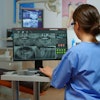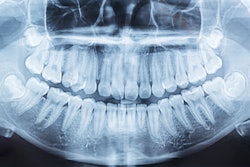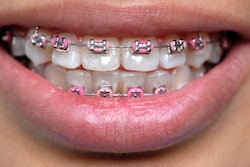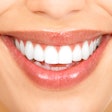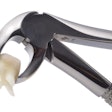A newly developed artificial intelligence (AI) tool soon may allow orthodontists to give patients better-fitting braces and clear aligners, minimizing errors and requiring fewer adjustments during treatment, according to new research.
It was developed by researchers from the University of Copenhagen in conjunction with intraoral scanner manufacturer 3Shape, according to a university news release that was published on March 13.
"Our simulation is able to let an orthodontist know where braces should and shouldn't exert pressure to straighten teeth,” Kenny Erleben, who heads image analysis, computational modeling, and geometry at the university's computer science department, said in the release.
The innovation could be a game changer in orthodontics. Currently, knowing the precise areas for braces to exert pressure to straighten teeth is based on orthodontists' judgment and requires trial and error.
To better understand the complexities of teeth movement, which vary by individual, researchers developed a computer model capable of generating accurate 3D simulations of a patient's jaw.
 A digital twin of a patient's jaw created through the integration of AI solutions and computational modeling, enabling precise simulation of anticipated teeth movements under specific conditions. The color map visually represents the extent and direction of teeth movement, with warmer colors indicating higher teeth movements. Image and caption courtesy of the University of Copenhagen Department of Computer Science.
A digital twin of a patient's jaw created through the integration of AI solutions and computational modeling, enabling precise simulation of anticipated teeth movements under specific conditions. The color map visually represents the extent and direction of teeth movement, with warmer colors indicating higher teeth movements. Image and caption courtesy of the University of Copenhagen Department of Computer Science.
Dentists and technicians can use these simulations to plan optimal treatments. By mapping sets of human teeth using detailed computed tomography scans, including the periodontal ligaments that secure teeth in the jaw, researchers created "digital twins," forming a database of digital dental patients for precise planning, according to the university.
Before the tool is available for orthodontists to use in clinical practice, it must undergo regulatory approval, according to the university.
"The fact that tooth movements vary from one patient to another makes it even more challenging to accurately predict how teeth will move for different people," Torkan Gholamalizadeh, PhD, of the university computer science department and 3Shape, said in the release.




